Description of oak and technology of its cultivation
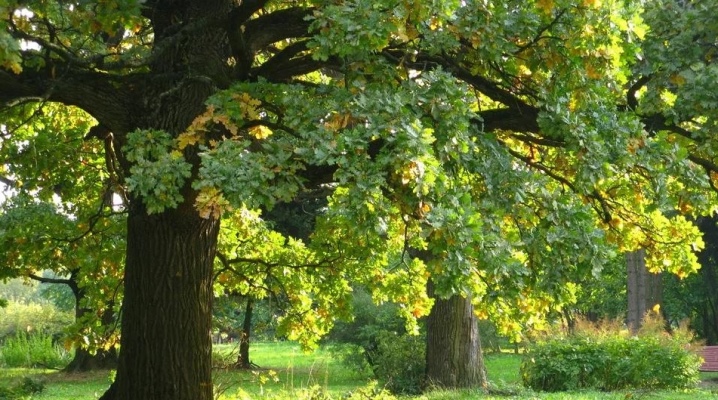
As the lion is called the king of all beasts, so the oak is the king among the trees. This giant can reach 50 meters in height and outlive more than one generation of owners. The oak has long been considered a symbol of strength, a male tree. Many of our tales and legends were associated with him. It is used in construction, leather tanning, medicine, and the manufacture of bottle caps. Oak acorns are used to feed livestock, as well as to make special coffee.
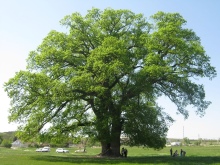
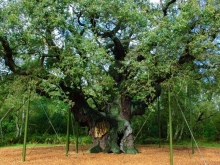
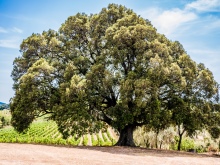
Short description
The oak has a botanical name - Common Oak (Quercus robur L.) and belongs to the genus of monoecious deciduous and evergreen trees and shrubs of the beech family... For the first time this genus was described by the naturalist from Sweden Karl Linnaeus. There are about 600 species of oak. The plant lives from 300 to 500 years, but there are cases when the oak giants reached the age of 2000 years.
Oak grows in various parts of the northern hemisphere. A territory with a temperate climate is perfect for him. The most favorable are temperate, subtropical and tropical zones of the hemisphere.
The oak looks like a powerful, dense tree. The bark is silvery gray at a young age and dark gray at a more mature age, covered with many cracks about 10 centimeters thick. The crown is usually particularly dense, equipped with thick, spreading branches. Their shape is curved - during growth, the shoots tend to light and actively change their direction.

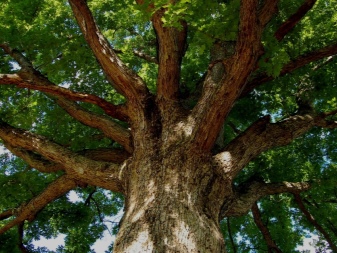
By shape, there are simple, toothed, lobed, pinnately separated, oblong and other types of leaves. Always with prominent veins and short petiole. Flowers are unisexual. They are formed into rare, thin "earrings". Male can be identified by a yellowish tint, female - by red (acorns subsequently grow from them).
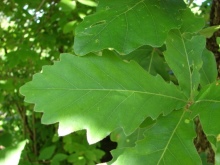
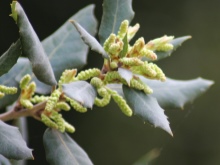

The most obvious sign of oak is acorns. They are usually oblong in shape and range in size from 1.5 to 3.5 centimeters. Acorns are yellowish and have longitudinal stripes. Smooth to the touch, with a rough "hat". They have a bitter taste.
The tree begins to bloom in April-May, much later than other trees. This is due to the fact that the oak is afraid of frost. Acorns ripen in September or October. The first fruits appear at the age of 40-50 years, and then oaks bear fruit every 6-8 years.
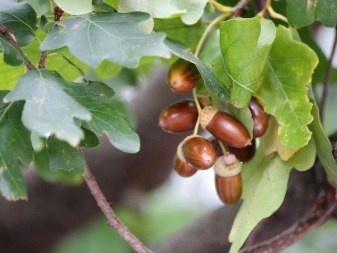

Dimensions and height
The height of the oak is most often about 35 meters. But sometimes trees can reach a maximum height of 50-60 meters. The trunk diameter in meters is from 1 to 1.5. In especially old individuals, which live for about a thousand years, the trunk thickness can exceed 4 meters.
Pozhezhinsky Tsar-oak is called the largest oak today. It grows in the Republic of Belarus, near the village of Old Romatovo. The tree is 46 meters tall and has a diameter of over 2 meters. Experts estimate the age of the giant at 800 years. In the 60s, it was even recognized as a natural monument.
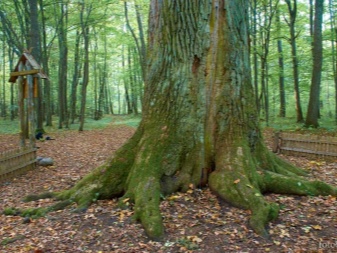

Growth rate
Growth in height lasts a long time - for 100-200 years. Later, development is directed to the thickening of the trunk and branches of the tree. In the first year, the growth is only 10-20 cm. Then, for the next 8-10 years, the outward appearance of the oak practically does not change - all the strength goes to the development and compaction of the root system. It can go up to 5 meters deep. This system provides the tree with high wind resistance. Further, the growth continues. Every year, until the 100th anniversary, the tree adds in growth by half a meter.
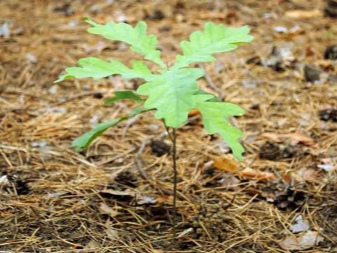
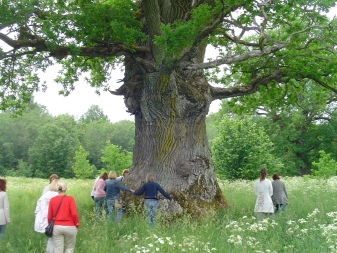
Spreading
Oaks prefer a temperate climate. In Russia, they usually grow in the European part. They can be found in broad-leaved (where they gather in oak forests) and mixed forests. In steppe zones, they grow closer to ravines. The border in the south is the tropical highlands. Some species of this plant are found only slightly south of the equator. The homeland of oak is Crimea, Europe, the Caucasus.
Oak grows favorably in soils saturated with minerals and organic matter.
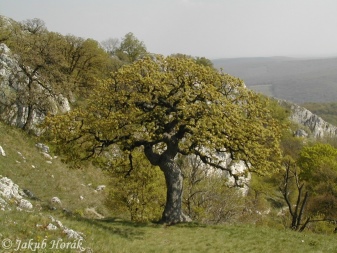
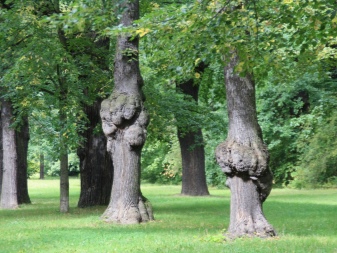
Main types and varieties
There is a wide variety of species of this tree, which may differ in their characteristics.
Fluffy
Quercus pubescens is distributed in Crimea, southern Europe and Asia Minor.
The height of such a plant is usually 10-12 meters. It features a curved trunk and a fairly voluminous crown. It got its name because of the special coating on the shoots, similar to fluff. Refers to a deciduous, slow-growing species. Loves light and warmth, drought resistant. Prefers clay soil with a significant lime content, more often southern slopes. The fluffy oak blooms during the blooming of the foliage - closer to May.
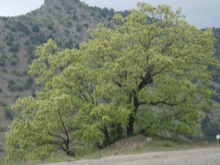
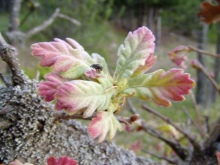
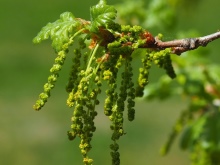
Not far from the fluffy oaks, you can find various mushrooms: chanterelles, boletus, boletus, milk mushrooms and mushrooms. For many years, high-quality and durable wood was used not only by local residents, but also exported by rail to Moscow and St. Petersburg. It is known that during the construction of the Black Sea Fleet more than half of the oak forest reserves were cut down.
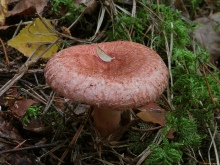

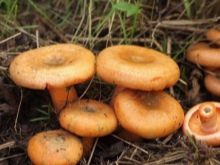
Rocky
Rock oak (lat.Quercus petraea (Mattuschk'a) Liebl.) Is also called winter, sessile, Welsh. It is found in the northern part of the Crimea, the Caucasus, in the Western Transcaucasia, in the western part of Ukraine, on the southern side of the Baltic. It can also be found in the UK, Ireland, Scandinavia and Italy.
A moderate, humid climate is suitable for favorable growth. Grows on mountain slopes, in rocky terrain, prefers calcareous soil, light-requiring. It grows at an altitude of up to 1000 meters, but there are also trees growing at 1800 meters above sea level. It reaches a height of 40 meters, the thickness of the trunk is 1 or more meters.
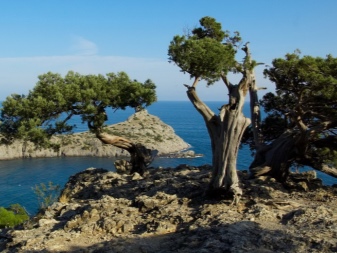
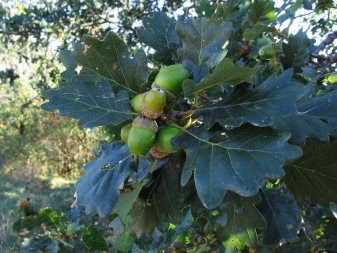
Rock oak is actively used in the manufacture of furniture, sleepers, and the construction of bridges. This type of oak is particularly distinguished by its longevity, height and impressive crown. Its majestic appearance attracts lovers of landscape design, so the rock oak is often planted in small gardens, alleys, and used in the organization of recreation areas.
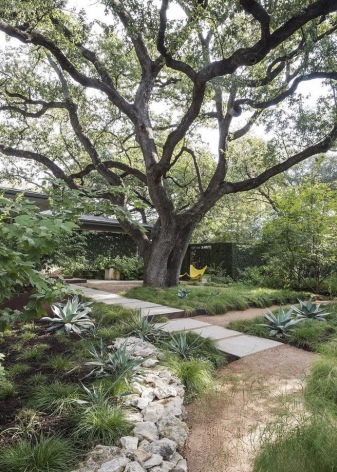
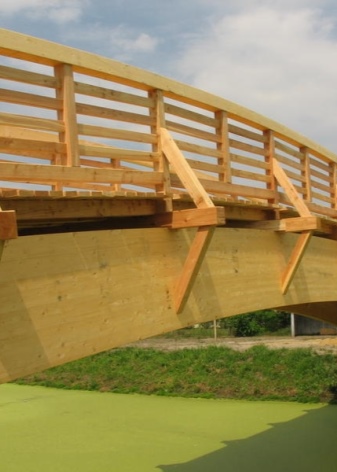
Maple-leaved
Quercus acerifolia is also called maple oak. It is native to the southern, central, and northern parts of the United States. It got its name from the shape of maple-like leaves, which turn red in autumn. More often found in the form of short trees or shrubs. It usually reaches a height of 15 meters.
Now this tree species is endangered and heavily protected.
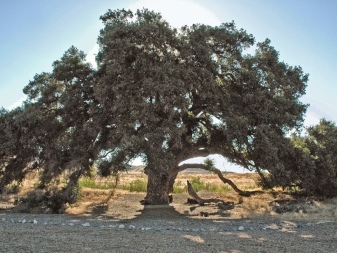
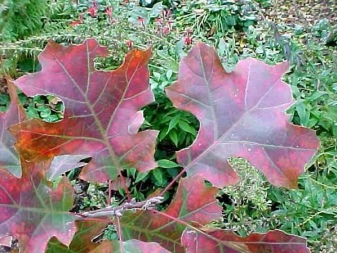
Red
Quercus rubra also has the names of chervonia, Canadian, northern. The name is associated with the leaves, which, when blooming, acquire a bright red, crimson hue. Acorns of this type differ markedly from others: they have a more spherical shape. They are often eaten in different European countries. The birthplace of the tree is Canada. The red oak is also one of the symbols of the country. In Eurasia, it grows in temperate climates.
Red oak has a thin trunk up to 1.5 meters wide. The crown is spreading, usually spherical in shape. It reaches a height of 25 meters. It is characterized by rapid growth, an increase of 60 cm occurs every year.
Trees love lit places, do not tolerate stagnant water in the soil... Easily resist pests and diseases. Red oak is more common in coastal areas, in hilly areas, in mixed forests. Frost and wind resistant, can tolerate shade well.
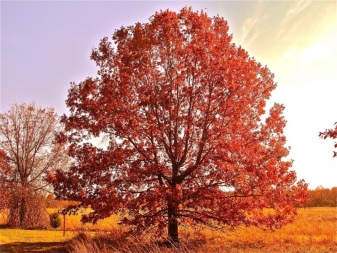
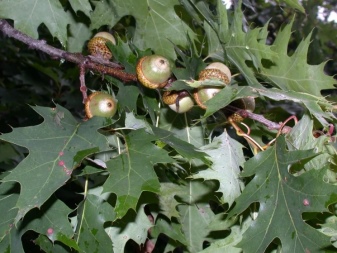
This view, Vividly distinguished by the beauty of the crown, it is often used in landscape design. Outwardly, in no way inferior to maple, red oak looks great in parks, when planting alleys, on boulevards and squares.It is also interesting that red oak has powerful phytoncidal properties.
Red oak is actively used in the manufacture of parquet boards, furniture, barrels, boats, ships, dyes, and is also used in the production of fuel.



Virginia
Quercus virginiana, or "southern living oak", "plateau oak", "roble oak" are part of the evergreen tree species. It grows in the United States, mainly off the coast, found on the coast of the Caucasus and Crimea.
The tree feels good both in dry areas and in wet ones. Often chooses heavy, acidic soils and sands with small particles. Also grows in swamps.
Differs in the appearance of the crown. It is formed by long, curved branches that actively grow in width, having a span of up to 30 meters. Some branches even have to lean on the ground. The root system is wide, extensive, formed from the first years of life. This feature gives the tree excellent wind resistance - even hurricanes are not afraid of the virgin oak.

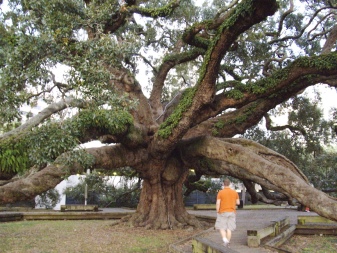
Virginian oak wood is particularly durable. Previously, ship frames were made from this material. Now the tree is useful mainly for animals - many representatives of the fauna feed on its fruits, such as squirrels, jays, woodpeckers, partridges, bears and others. Also, the leaves of the virgin oak are used in the manufacture of carpets.

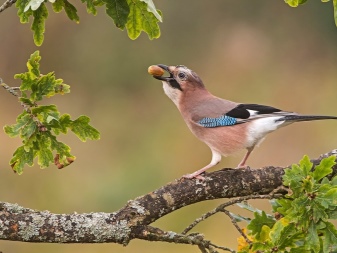
Mongolian
Quercus mongolica got its name from its origin. The first species of this plant was found in Mongolia in the 19th century. The specimen was described by scientists in the valley of the Argun River. The tree's habitat is eastern Siberia, Mongolia, Korea, southern Sakhalin, Japan. In the Far East, it forms vast forests and is a very common species.
The tree grows to a height of 20-30 meters. Rarely found as a bush.
Mongolian oak grows slowly, but it is notable for its long life - the period can be up to 800 years.
It is resistant to cold and wind, loves more light. Prefers mountains and rocks, rocky soil, but does not grow above 700 meters above sea level. The trunk has a smooth, gray bark. The branches are thick, strong, curved.
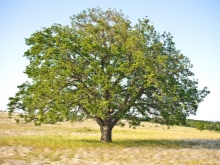
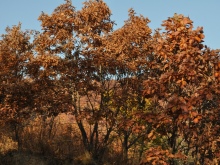

It is this plant species usually used during the landing of parks, squares and alleys... It is popular in shipbuilding, in agriculture, wood is used in the manufacture of rotary cut veneer, ships, furniture, and interior decoration.


Black
Quercus nigra is a deciduous perennial tree whose bark darkens noticeably with age... The natural range extends to several states of America, more in the southern and eastern parts, on the coast of the Gulf of Mexico, and is cultivated in Western Europe.
Black oak can reach a height of 20 meters. The trunk is usually no more than 1 meter in diameter. The crown is distinguished by its ovoid shape. The tree continues to grow up to 80 years old, then gradually begins to grow in width, so the black oak casts a thick shadow.
For life he chooses the banks of swamps and rivers. Loves the sun. It is notable for the fact that it does not need care. This tree can be easily grown from an acorn or seedling.
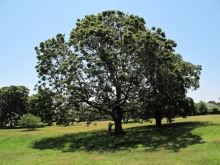
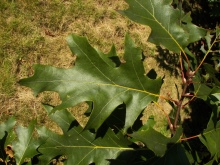

Black oak is widely used due to the special strength and durability of wood. It is used in car building, furniture manufacturing, house building, underwater construction.
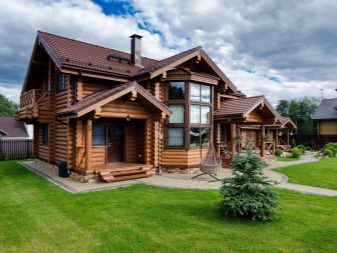

Toothed
Quercus dentata Thunb is a special species of oak listed in the Red Book. In Russia, this type of oak can be found only in the Primorsky Territory and on the island of Kunashir. Also native to Japan, Korea, North and Central China.
The height of the jagged oak is up to 20 meters. The trunk diameter usually does not exceed 80 cm. The gray-brown bark is thick and cracks over time.
The tree is characterized by rapid growth, and the toothed oak is also famous for its fire resistance. The breed is drought-resistant, light-requiring. Selects southern, medium-steep slopes, avoids northern areas. Doesn't like winds. This type of oak is actively protected today.It can be found in various reserves and botanical gardens in Russia.


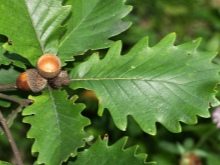
Chestnut
Quercus castaneifolia is one of the fastest growing long-lived trees. In Azerbaijan, it is listed in the Red Book. Natural area - Caucasus, Armenia, Northern Iran.
In height it can reach up to 30-40 meters. The trunk is small, up to 1.5 m in diameter. The crown is wide, spherical. The bark is smooth, gray.
The chestnut oak forms forests and grows more often in the lowlands. Resistant to frost, can easily tolerate shade. Drops foliage during drought. The acorns of the chestnut oak are used in the treatment of diabetes mellitus.
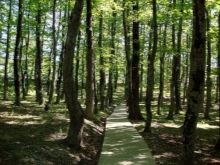

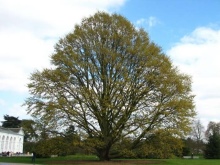
Other
There are 19 types of oak in Russia. Among them, the petiolate (Quercus robur) is more common. This representative easily tolerates droughts, is not afraid of wind and sudden temperature changes. Grows in fertile soils, loves light. The petiolate species grows in height up to 50 meters. And the age can reach from 500 to 1500 years.
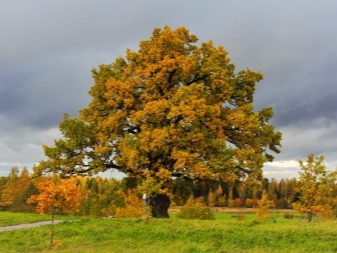
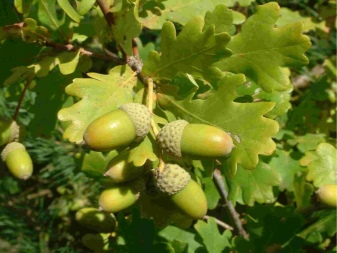
Planting and care rules
Most effective planting methods: with a seedling or an acorn.
- Acorns are prepared in the fall, they are harvested directly under the tree.... The fruits on the same day must be planted in the ground and not touched until the onset of spring. You can also try finding acorns in the spring. It is necessary to select the germinated fruits and also plant them in the ground or place them in wet sand. The fruits must be chosen whole, without any damage or rot. Planting occurs in spring and autumn. You can plant fruits directly in the garden, or you can pre-germinate a seedling.
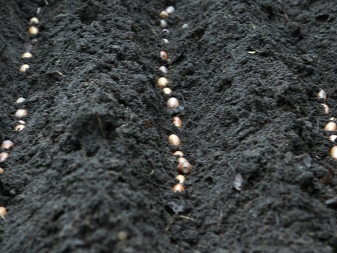
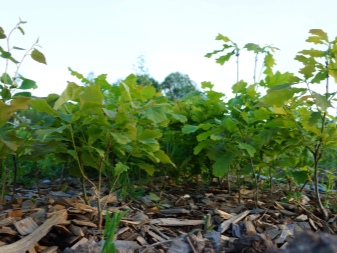
- The easiest way to grow this tree is by planting a seedling.... During transportation, cover the roots with a damp cloth. If you purchase a seedling, it will provide a high survival rate. Plant the seedling in the ground, leaving a natural clod of earth. For planting, prepare a site with moist, moderately acidic soil and sufficient sunlight.

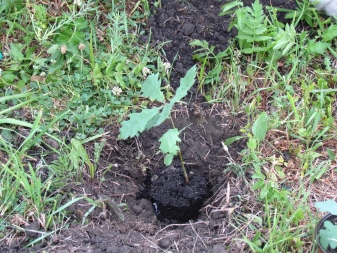
Reproduction
In nature, oak propagates using seeds (sexual) and vegetatively.
- Sexual way... In late spring, male flowers filled with pollen open. This pollen is active only for 5 days. If the weather is favorable, pollination is more efficient. In the rain, pollination stops altogether.

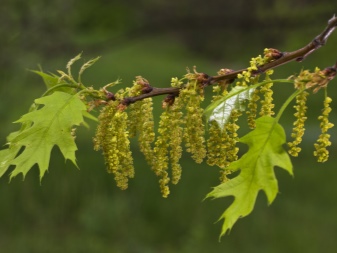
- Vegetative way... It happens that layers appear on the mother tree - young shoots that feed on the tree for some time until they finally separate and become an independent individual.
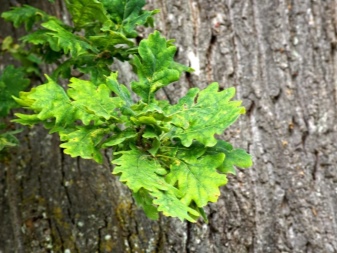
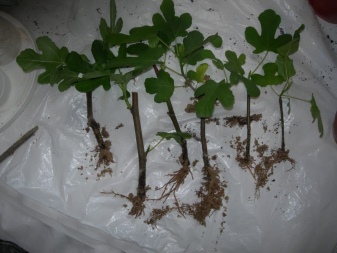
Diseases and pests
The most dangerous diseases are fungal and bacterial. They mess up the whole tree system. Also, in recent years, there have been more and more cases of infection of oak trees with powdery mildew. Among the pests dangerous for the tree, ticks, beetles and caterpillars stand out. Especially harmful oak leafworms.
It is quite easy to notice signs of a disease in a tree - dry twigs will appear among the crown, the leaves will acquire a pale shade, begin to dry and curl. In the spring, the first signs of powdery mildew may appear. Depending on the reason, it is necessary to spray the crown with insecticidal preparations and water the plant with them, make intra-stem injections.
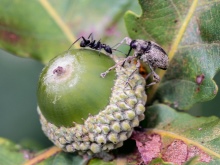
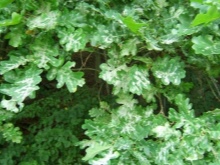

Oak in landscape design
With their majestic appearance, these trees create a special atmosphere wherever they are planted. They decorate squares, parks, boulevards and alleys. The bright color of the leaves of some species is in no way inferior to maple, and under the spreading branches of these giants, you can easily hide in the heat.
On large household plots, the owners can plant an entire alley of these trees. The first few years the trees will be small, but then a walk under their branches will delight anyone.
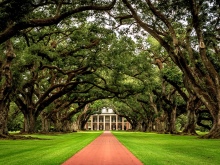
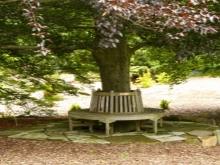

Interesting Facts
- If you are a fan of truffles or are looking for this valuable mushroom, you should know that most often they can be found in oak groves.
- In the village of Allouville-Belfoss in France, there is a whole oak chapel. He has already crossed the 800-year mark.In the hollow in the middle of the 17th century, two chapels were built. A spiral staircase winds around the tree itself.
- Only one acorn in a thousand will be lucky to become a tree.
- The more time the oak wood spends in the water, the stronger and more valuable it becomes.
- In Italy, they prefer to cook pizza on oak wood.
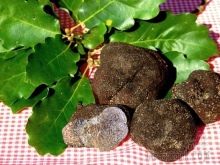
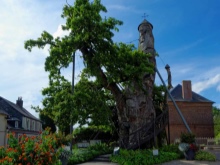




































































The comment was sent successfully.